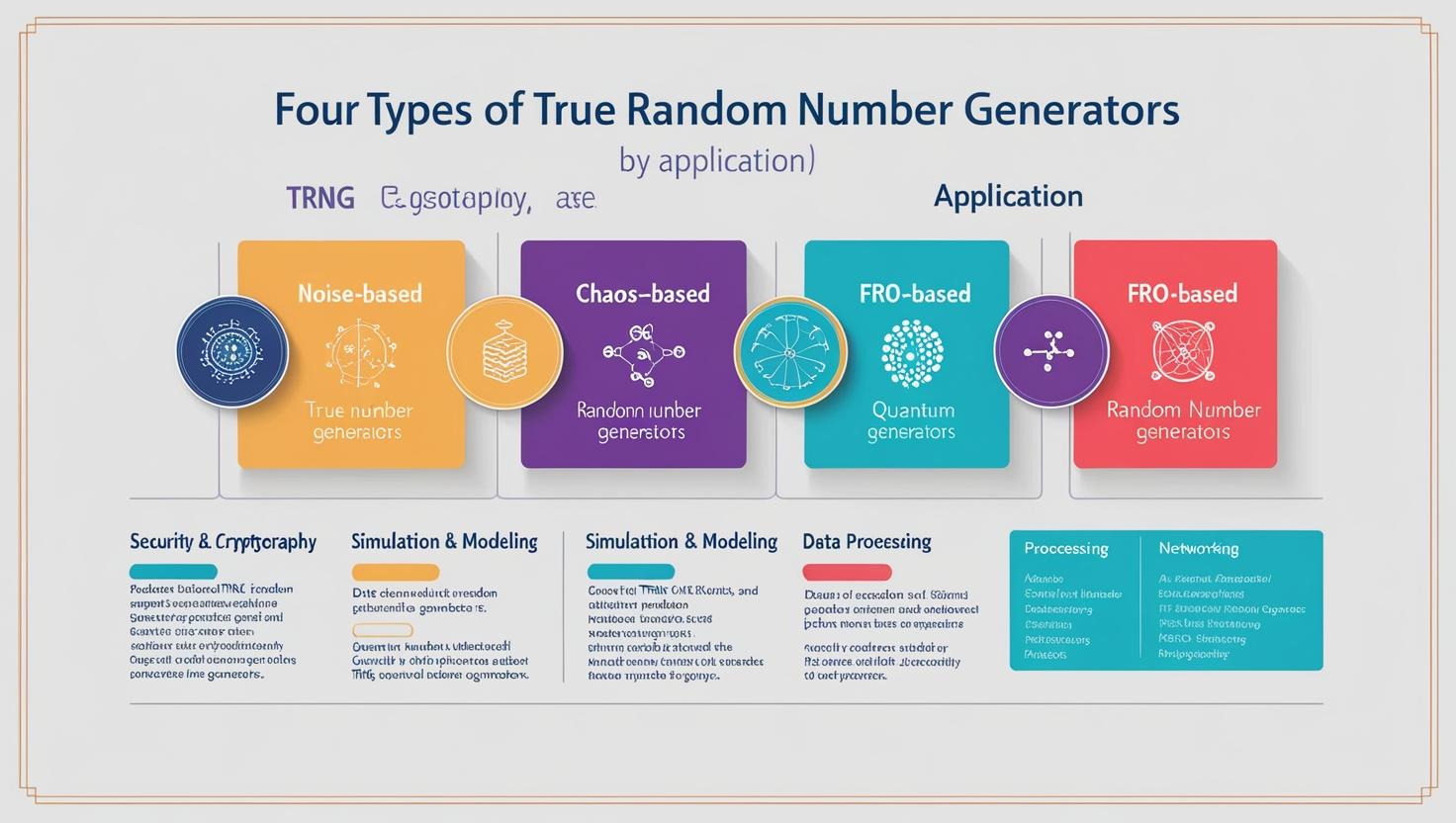In a digital world increasingly defined by data security and trust, randomness has become one of the most valuable resources—though ironically, one of the hardest to produce. This is where the True Random Number Generator (TRNG) market is stepping up in a big way. No longer limited to niche security use cases, TRNGs are now foundational to emerging technologies like AI, quantum computing, and embedded IoT systems.
From smarter chips to smarter code, TRNGs are quietly powering the future—and the market is growing faster than many anticipated.
Why Randomness Matters More Than Ever
At first glance, “random numbers” might sound like something from a math textbook. But in the context of cybersecurity, finance, blockchain, and even gaming, these numbers are the building blocks of security. They encrypt messages, protect passwords, validate transactions, and generate everything from secure codes to digital identities.
The difference between a predictable system and a secure one often comes down to how truly random its number generation is. This is exactly what the True Random Number Generator market addresses—providing hardware-based randomness that’s immune to predictable algorithms or software tampering.
The New Wave: TRNG Meets AI
One of the most exciting developments in the TRNG space is its convergence with Artificial Intelligence. While TRNGs provide raw entropy (i.e., unpredictability), AI helps manage and refine that randomness. By analyzing environmental noise and correcting for bias, AI-enhanced TRNG systems produce cleaner, more efficient random sequences.
This is critical for applications like autonomous systems, real-time decision engines, and cryptographic AI models. In these environments, every millisecond counts, and every bit of data must be trustworthy. AI is helping TRNGs deliver that reliability at scale.
Download PDF Brochure @ https://www.marketsandmarkets.com/pdfdownloadNew.asp?id=224265452

Quantum Tech: Unlocking the Purest Randomness
Another frontier pushing the TRNG market forward is quantum technology. Quantum mechanics naturally lends itself to randomness—think of the unpredictable behavior of subatomic particles. By tapping into this fundamental uncertainty, Quantum Random Number Generators (QRNGs) can create randomness that is scientifically provable and virtually unhackable.
Startups and research labs alike are now building TRNG chips based on quantum effects like photon emission or electron tunneling. These chips are smaller, faster, and more energy-efficient than traditional systems—and importantly, they’re being designed to fit inside IoT devices, mobile phones, and embedded security modules.
This shift toward on-chip quantum randomness is one of the most transformative TRNG market trends, with potential applications across telecommunications, defense, automotive, and even national cybersecurity infrastructure.
Smaller, Faster, Smarter: Hardware Integration at the Core
Beyond AI and quantum, hardware miniaturization is rapidly redefining what TRNGs can do. No longer confined to bulky standalone modules, TRNGs are being integrated directly into chips used in consumer electronics and industrial systems.
We’re seeing 2mm-sized chips that deliver secure randomness in real time—used in everything from payment terminals to automotive ECUs. With the rise of edge computing and connected devices, embedding security at the hardware level is becoming non-negotiable. TRNGs are now a core part of that shift, enabling trusted communications from the source.
Key Drivers Behind the Market Growth
The TRNG market is being propelled by multiple trends:
Cybersecurity Pressure: With cyberattacks becoming more sophisticated and regulations tightening, organizations need robust cryptographic solutions—and TRNGs are at the heart of them.
IoT Explosion: Billions of connected devices require lightweight, energy-efficient security, which TRNGs can deliver.
Post-Quantum Readiness: As quantum computing becomes more realistic, traditional encryption is at risk. TRNGs and QRNGs offer a proactive defense.
Regulatory Compliance: Standards like GDPR, HIPAA, and PCI-DSS increasingly favor or require true hardware-based randomness over software solutions.
These pressures are not short-term—they’re structural. That’s why industry analysts project True Random Number Generator (TRNG) Industry worth $7.71 billion by 2030
Barriers to Watch For
Despite the momentum, the path isn’t without friction. The cost and complexity of quantum hardware remain high, and integrating TRNGs into legacy systems poses engineering challenges. Education and awareness are also key—many developers still rely on pseudo-random number generators (PRNGs) that are faster but far less secure.
Overcoming these obstacles will require industry collaboration, open standards, and continued investment in both research and scalable product design.
The Road Ahead: Trust at the Speed of Innovation
As the digital economy becomes more interconnected—and more vulnerable—the demand for trustworthy, tamper-proof randomness is only going to grow. The convergence of AI, quantum technology, and next-gen hardware is transforming how we generate, protect, and transmit data.
In this environment, the TRNG market isn’t just solving technical problems—it’s building the foundation of digital trust.
For businesses, governments, and even individuals, this quiet revolution in randomness may be one of the most important shifts of the coming decade.
FAQs:
1. What is a True Random Number Generator (TRNG), and why is it important?
A TRNG is a hardware-based system that generates unpredictable numbers using physical processes (like electrical noise or quantum effects). Unlike software-based generators, TRNGs offer truly random output, which is critical for encryption, authentication, and data security—especially in an era of increasing cyber threats and quantum computing.
2. What’s driving growth in the TRNG market right now?
The market is being fueled by rising demand for secure data encryption, the growth of IoT devices, advancements in AI, and the looming risks posed by quantum computing. As regulations tighten and digital infrastructure expands, more industries are turning to TRNGs for foundational security.
3. How are AI and quantum technologies impacting TRNG adoption?
AI is improving the quality and efficiency of TRNGs by filtering noise and maintaining consistent entropy levels. Meanwhile, quantum-based TRNGs (QRNGs) are offering ultra-secure, provably random outputs—positioning them as ideal solutions for future-proof encryption.
4. Which industries are adopting TRNGs the fastest?
The biggest adopters include cybersecurity, defense, finance, telecommunications, automotive, and healthcare. TRNGs are also becoming increasingly relevant in embedded devices and IoT security, making them attractive across both enterprise and consumer tech sectors.
